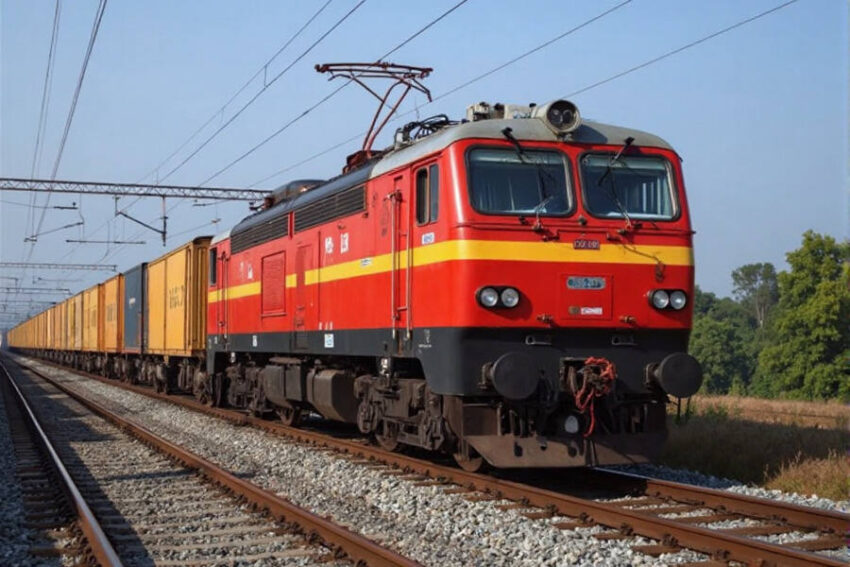China Railway Guangzhou Group Triumphs Over Monumental Holiday Surge, Expertly Managing Over Two Million, Five Hundred Thousand Passengers
China Railway Guangzhou Group triumphed over the monumental surge in passenger numbers during the 2025 National Day holiday and Mid-Autumn Festival, successfully managing over two million, five hundred thousand passengers.
China Railway Guangzhou Group triumphed over the monumental surge in passenger numbers during the 2025 National Day holiday and Mid-Autumn Festival, successfully managing over two million, five hundred thousand passengers. This impressive achievement was made possible by the strategic deployment of a robust schedule, including 3,627 trains, with 516 additional services specifically added to high-demand routes such as Beijing-Guangzhou and Hangzhou-Shenzhen. The group’s meticulous planning ensured that passengers were efficiently transported across key cities, with special attention given to overnight high-speed trains. The seamless management of such a large volume of travelers, despite the holiday rush, highlights the group’s capacity for precise coordination and its dedication to maintaining smooth and reliable service during peak travel times. This triumph underscores the expertise of China Railway Guangzhou Group in handling the complexities of one of the busiest travel periods of the year.
On October 7, during the peak of China’s National Day holiday and Mid-Autumn Festival, travel saw a significant surge as millions of passengers made their way back from holiday destinations. The China Railway Guangzhou Group anticipated handling 2.593 million travelers on this busy day, marking a sharp rise in passenger numbers due to the dual celebration. This mass return journey pushed the railway system to its limits, requiring precise planning and an efficient travel network to handle the increased flow.
In response to the high demand, the group organized a robust transportation schedule, including 3,627 trains to cover various regions across the country. This was a substantial increase from the usual daily schedule. Among these, 516 additional trains were added to key routes that were expected to experience the highest demand. These routes included the Beijing-Guangzhou, Hangzhou-Shenzhen, Shenzhen-Zhanjiang, and Guangzhou-Shenzhen-Hong Kong lines. The added trains were aimed at easing congestion and ensuring that passengers could travel without delays, especially those headed to major cities and regional hubs.
The surge in passengers was primarily attributed to the return flow of travelers heading back from smaller cities and popular tourist destinations to major urban centers such as Guangzhou, Shenzhen, Changsha, and Wuhan. As a result, stations across the country saw heavy foot traffic, with a greater number of people attempting to catch their trains in a limited time frame. To manage this, the railway authorities adjusted their operations, not only increasing the frequency of trains but also ensuring that passengers had the necessary infrastructure and support to navigate the busy travel day.
A significant aspect of the planning was ensuring that trains traveled efficiently and served as many passengers as possible. The additional 516 trains were strategically added to accommodate travelers on these high-demand routes. By including these extra services, the railway group helped reduce the chances of overcrowding, particularly during peak hours. It also meant that more people could return to their homes or work without experiencing long delays or missing their scheduled departures. These additional services were essential in maintaining a smooth flow of passengers, particularly on long-distance journeys, where delays can be particularly stressful.
Furthermore, to further enhance passenger experience, 252 overnight high-speed trains were scheduled to depart in the early hours of October 8. These trains were strategically placed to serve popular destinations like Changsha, Chaoshan, and Zhanjiang. The introduction of overnight trains helped reduce daytime congestion, providing passengers with more flexible travel options. It also meant that travelers could avoid the rush of the day’s peak hours, allowing them to rest and travel in comfort during the night while avoiding the bulk of the crowded stations and train cars.
Despite the surge in passenger numbers, the primary challenge faced by the China Railway Guangzhou Group was ensuring the efficiency and safety of the traveling public. Major railway stations such as Guangzhou South Station, Shenzhen North Station, and Changsha South Station had to cope with large volumes of people, so the management of these stations was critical in maintaining smooth operations. These stations, along with others across the network, implemented additional measures to facilitate the travel experience.
One key element of this plan was the opening of all available exit channels at major stations. This effort allowed for a smoother flow of passengers leaving the platforms and entering the main terminal areas. It reduced bottlenecks and allowed people to exit the stations quickly, making room for others to board their trains. Volunteers were also deployed to guide passengers and help streamline transfers, ensuring that people could navigate busy stations with minimal delay.
To better assist travelers, especially those with special needs, stations provided additional support. Volunteers and station staff were positioned to help elderly passengers, those traveling with children, and others who required extra assistance. Traditional ticket counters and manual check-in services remained available to cater to those who were not as familiar with the self-service kiosks or digital check-in options. This personal touch helped alleviate stress, particularly for elderly passengers or those who may have had difficulties using automated systems. The stations ensured that these services were fully operational, making travel easier for everyone, regardless of their technical knowledge.
With the increased flow of passengers, it became even more important for travelers to be prepared. The railway authorities reminded passengers to check their ticket details, particularly the departure station, to avoid any confusion on the day of travel. With the increased number of trains, some passengers may have been unfamiliar with their specific departure points. By double-checking their ticket information, travelers could ensure that they were at the correct station and platform, avoiding unnecessary stress.
Additionally, passengers were encouraged to allow extra time for urban transit and station security checks. During periods of heightened travel, security procedures are always more rigorous, and stations tend to be busier than usual. Allowing extra time to clear security and navigate through crowded areas ensures that travelers can board their trains without unnecessary rush. This is particularly important during holiday travel when delays can cause further disruptions to people’s plans.
The railway group’s strategic planning and careful coordination were essential to ensuring the smooth flow of passengers during this peak travel period. The addition of extra trains, the deployment of volunteers, and the special assistance for elderly and vulnerable passengers all contributed to an efficient and relatively stress-free travel experience for millions of people. However, passengers also played a vital role in ensuring that their own travel went smoothly by being well-prepared and mindful of the extra time required for security checks and station navigation.
China Railway Guangzhou Group expertly handled over two million, five hundred thousand passengers during the 2025 National Day and Mid-Autumn Festival by deploying an enhanced schedule of 3,627 trains, including 516 additional services, effectively managing the massive holiday surge.
In conclusion, the National Day holiday and Mid-Autumn Festival holiday saw an overwhelming number of passengers returning home, but through careful planning and cooperation between the railway authorities and travelers, the surge in travel was managed effectively. By providing additional train services, ensuring support at stations, and encouraging passengers to be diligent in their preparations, the China Railway Guangzhou Group successfully handled the holiday rush and provided millions of travelers with a smooth journey.
The post China Railway Guangzhou Group Triumphs Over Monumental Holiday Surge, Expertly Managing Over Two Million, Five Hundred Thousand Passengers appeared first on Travel and Tour World


Comments and Responses
Please login. Only community members can comment.